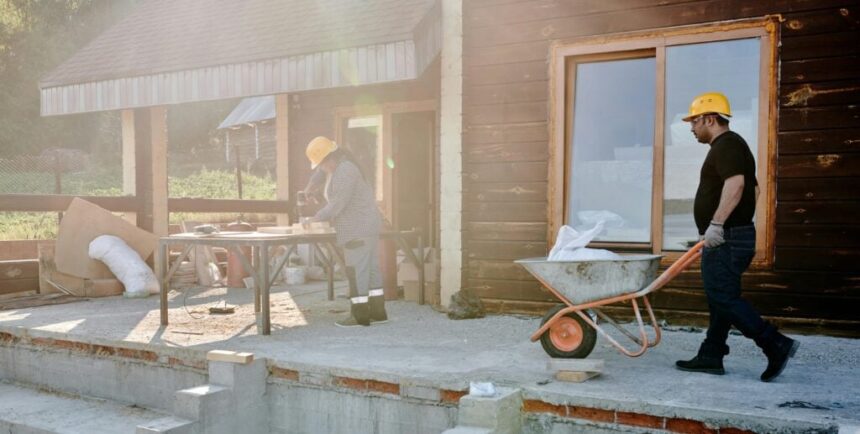I’ve been working in the real estate industry for over a decade flipping houses, and I’ve made many mistakes—too many to count. I’ve learned costly and painful lessons. And I’ve made a lot of money, but also lost a lot of money.
Despite what you see on HGTV, flipping real estate is not an easy way to get rich. The hard truth is that buying, renovating, and leasing (or selling for a profit) comes with risk. Flipping houses is less about the aesthetics seen on reality TV and more about strategic financial decisions, deep market knowledge, and having the guts to make bold moves.
If I had to start all over again and could take five lessons I’ve gathered from my experience with me, here’s what they would be.
1. You Make Money When You Buy, Not When You Sell
I don’t know why this is such a hard lesson for so many real estate investors, but I think almost everyone who enters the market has to learn it at least once.
If you pay too much on day one, it will heavily impact your profits. You might even lose money. Your profit is locked at the moment you buy, not when you sell.
Here’s how to ensure you’re buying right:
- Stop sourcing from the MLS: If you want to spend too much money on a property, buy one marketed on the MLS. You’ll face the most competition, in the place where sellers are looking for top dollar.
- Know the numbers: You can’t make a solid offer if you don’t know what everything is worth. Become your own go-to expert on pricing in the area you’re investing in. You need to understand what a distressed property should cost versus a renovated one and know that margin.
- Reverse-engineer your profits: No business is successful without profits. Calculate how much money you need to earn from the deal for it to be worth your time. Then, you can look at the purchase, potential sale, and renovation costs.
- Don’t be afraid to lowball: I’ve made a lot of sellers angry by making lowball offers, and because I’ve developed a tough skin, I don’t care. Start with offers at 50% of the asking price, and be relentless. Yes, it might seem low, but volume is your friend here. The more offers you make, the more likely some will stick. Prepare for plenty of pushback, but that’s just part of the game.
New real estate investors get emotionally invested in properties and their offers. They don’t want to “lose” or “let a deal go.” You need to learn to remove your emotions and treat your offers purely as a business operation.
Your goal is to get the best property for the lowest price. If you have to pay too much for a home, you need to walk away from the deal and find another.
2. Every Renovation Goes Over Budget
After over 1,000 completed renovations, I can confidently say every renovation has unexpected costs. I never expect a renovation to come in under budget (it seldom does), and I always make sure I have extra funds for when something inevitably goes wrong. No matter how many walkthroughs you do, something expensive is always lurking. Expect it and budget for it.
When flipping homes, you’re not just working for a profit margin, but you’re working against time. Even if you buy in all cash, you have holding costs (taxes, vacancy, utilities, etc.); and while you’re holding the property, your money isn’t working for you. You need to get in, complete the renovations, and get out as quickly as possible. That means that if an item costs more than anticipated, it’s probably better to stick with the original plan and pay extra money than to waste time looking for an alternative solution.
That’s why I always set aside an extra cushion of 10% to 20% on a rehab budget. If you expect the rehab to cost $20,000, prepare for it to hit $25,000. This way, you’re never caught off guard. You can only get shocked if you are surprised.
3. It Isn’t Supposed to Be “Pretty,” but Profitable
It’s easy to get caught up in high-design finishes and end up wasting your money. While this isn’t necessarily true for every property, real estate investors new to investing are more than likely targeting the lower end of the market.
My market is Toledo, Ohio, so the homes I renovate are primarily workforce housing. I am highly conscious of over-upgrading and avoiding finishes that the end user isn’t going to value (or pay more for). While nice finishes may look great, my tenants or buyers aren’t going to pay more rent to have them. They are happy with repainted cabinets, laminate countertops, and new carpets.
Select materials that match what your area’s local buyer or tenant expects. Never aim to be the nicest house on the street.
4. There’s Nothing Wrong With the Deal—as Long as the Price Is Right
This lesson expands on the first lesson: Drill into your head that there’s nothing wrong with the deal as long as the price is right.
Don’t be afraid of hard work. The best deals will be found in a situation with the most drama. These are the deals that others don’t want to touch.
You want to be the person that offers a solution to a problem. If you can provide a solution for a problematic deal, you have a great transaction.
If you buy the property well and cheap enough, you can almost always find a solution. That doesn’t mean you need to do the work yourself. You can always hire a general contractor or even wholesale it to another investor who does want to take on the work.
For example, I often come across properties that need a lot of work. These deals don’t work for my business needs because I have time restraints on how long my team can be working on a property. I need them to be in and out quickly so they can move on to the next house. But someone doing two or three homes a year might see this as a highly profitable transaction for them.
5. Money Makes Money—Don’t Sit on Your Inventory Waiting for Top Dollar
When I sell a home, I want it to sell quickly, so I renovate better than the comparable sales, and then list cheaper.
I can hear you already wondering, “why?”
I don’t want my capital held up in a property any longer than necessary. The faster I can move on to the next deal, the better my long-term profits will be. I’ve been known to lower the asking price of a property to below market just so that it sells faster. You can list a home above market, but it will sit there, and you won’t be guaranteed your target price.
If you’re flipping homes as a business, you’re targeting volume. Even if you’re flipping A-class properties, your goal must be to renovate the property better than anyone else—and then list it better.
Right now, real estate prices are high because there are a lot of homebuyers in the market while investors wait for a better interest rate environment. When I sell to investors, I sometimes sell the property below market value because I know the investor doesn’t necessarily care about the comps, but the return on investment.
Final Thoughts
What can’t be emphasized enough is how important your relationships are in business. Establish relationships with people who live and breathe the local market. They are going to be your best source of deals and labor.
I see investors get so caught up in what they read and analyze online that they forget what’s most important: getting your boots on the ground, and getting to know the microeconomics of an area. For example, a home facing a park might look great, but if you’re unfamiliar with the area, would you know that the park is known for criminal activity?
What I like to point out about Toledo is that while its population might be declining as a whole, there are specific pockets seeing strong demand and will always have strong demand. And these are the areas where we are seeing the most appreciation.
You need to know your market like the back of your hand. Then, you need to form the relationships necessary to fully tap into that market.
Your one-stop guide to making a profit with fix-and-flips
A step-by-step plan to succeed in your first or next house flip, this bundle will teach you how to budget and estimate every aspect of your renovation, from cosmetic renovations to complex installations and upgrades. Discover the ins and outs of flipping real estate in any part of the economic cycle, find options for financing your flips, and undertake larger renovation projects.
Note By BiggerPockets: These are opinions written by the author and do not necessarily represent the opinions of BiggerPockets.








